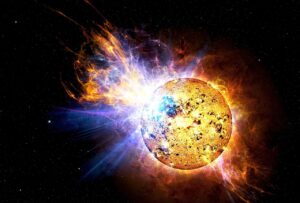What Is Quantum Superposition? (In Simple Terms)

Quantum physics can seem strange, but it’s also fascinating—and one of its most mind-blowing ideas is something called quantum superposition. It may sound complicated, but let’s break it down in a simple way.
Imagine This:
You flip a coin. It can land either heads or tails. In the real world, it’s one or the other—never both. But in the quantum world, things behave differently.
In quantum superposition, tiny particles (like electrons or photons) can be in multiple states at the same time—like being both heads AND tails—until someone checks or measures them. It’s not that we don’t know which one it is; it’s that the particle actually exists in both states at once.
The Classic Example: Schrödinger’s Cat
Physicist Erwin Schrödinger came up with a thought experiment to explain this weirdness:
- Imagine a cat in a box with a device that could release poison depending on a random quantum event.
- Until someone opens the box and checks, the cat is considered to be both alive and dead at the same time.
- That’s superposition—the cat is in a mixed state until we look and force nature to “choose” one outcome.
(Don’t worry—no real cats are harmed. It’s just a mental experiment!)
How Does It Work in Real Life?
Quantum superposition isn’t just theory—it’s used in real technology, such as:
- Quantum computers: Instead of using bits (which are 0 or 1), they use qubits, which can be 0, 1, or both at once. This lets them do some calculations much faster than normal computers.
- Quantum encryption: It helps create super-secure communication that can’t be easily hacked.
Why It’s So Weird
In everyday life, we don’t see things in two states at once. A light switch is either on or off, not both. But in the quantum world, particles play by different rules. That’s why quantum physics feels so mysterious—and powerful.
Final Thoughts
Quantum superposition is the idea that very small particles can be in more than one state at the same time—until we observe them. It challenges our understanding of how the world works, but it’s also helping scientists build the future with new technologies like quantum computers.





